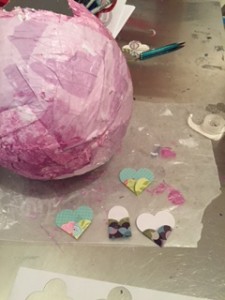Is Art Therapy For You?
 Ever wonder what art therapists do? Art therapists are trained as psychotherapists with master’s degrees in expressive therapy. We utilize art materials to help individuals and groups express feelings nonverbally. Art therapy is one of the most effective ways to overcome psychological blocks that prevent individuals from reaching their goals. Art therapists utilize the drawings of their clients in several different ways.
Ever wonder what art therapists do? Art therapists are trained as psychotherapists with master’s degrees in expressive therapy. We utilize art materials to help individuals and groups express feelings nonverbally. Art therapy is one of the most effective ways to overcome psychological blocks that prevent individuals from reaching their goals. Art therapists utilize the drawings of their clients in several different ways.
Initially the drawings are used diagnostically as a way to uncover the underlying issues of what a person is struggling with. I use a series of ten to fifteen drawings when I meet with a client for the first time. These drawings are used as a baseline for where the person is emotionally at this time in their life. These drawings can also reveal unconscious material that can be at the root of what clients think they are struggling with. These initial drawings act as a roadmap to treatment.
Art therapists are trained to understand which materials can most effectively allow for the expression of specific feelings. Often when an individual starts therapy they are emotionally defended. They have a well-rehearsed story. The drawings cut through the defenses and quickly reveal deeper content. Art therapists then provide art materials such as paint or clay or pastels to foster the expression of what was previously well covered. I continue to be surprised at what comes up for my clients that has until this time been suppressed. Often what is revealed in the drawings is not what my client thinks they need to address but is the root of their struggle.
You do not have to know how to draw or be in any way artistically inclined. We as art therapists are trained to walk you through working with any art material that we would choose for you. It’s the pure expression of feeling and not your artistic talent that we are looking for. Art therapists treat the same emotional disorders and mental health issues that verbal therapists address. In fact, art therapists often work in tandem with verbal therapists when a client is blocked and unable to express their feelings verbally.
At the termination of therapy, I will ask for a few of the same drawings that my client created at the very start of therapy. There is such a difference in the drawings from the start of therapy to termination that show emotional growth, insight and healing. It is always rewarding to be able to see progress and have a visual record of a person’s improved emotional well-being.
If you are interested in further information about art therapy, you can go to my website: thedrawinganalyst.com or the American Art Therapy Association website: arttherapy.org.

